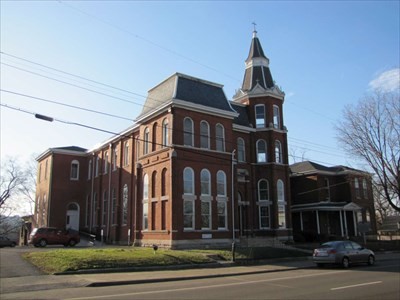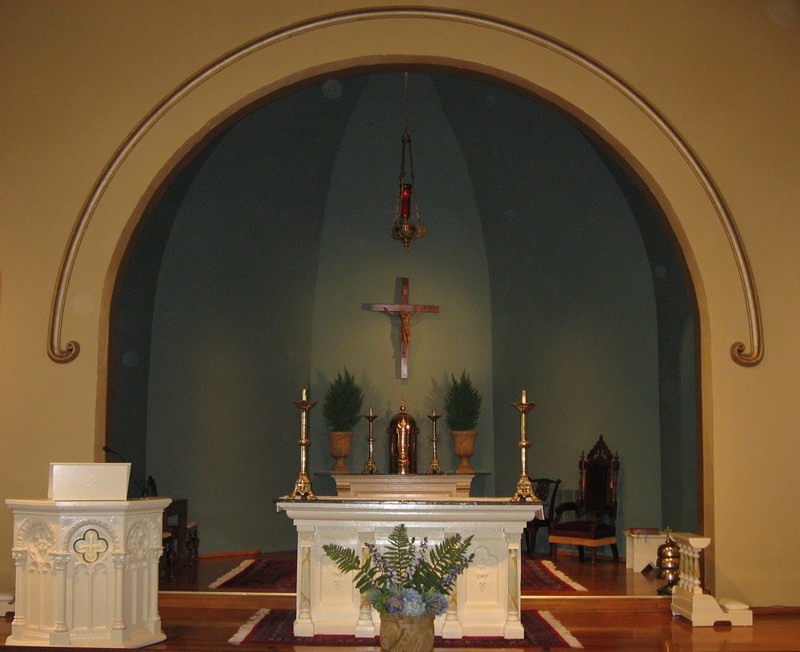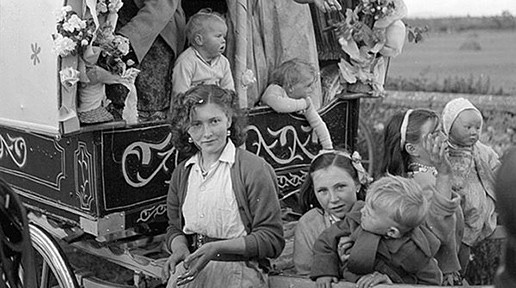St. Patrick's Church
Introduction
Text-to-speech Audio
Images
St. Patrick's Church (image from Waymarking)

St. Patrick's altar (image from St. Patrick's Church)

Portrait of an Irish Traveler family (image from Irish Central)

Backstory and Context
Text-to-speech Audio
The brick Second Empire style
building was completed in just seven months beginning in the summer of 1890,
and was dedicated on February 8, 1891. Above the two-story sanctuary are the
school classrooms, with the brick rectory as a stand-alone house in the same
Victorian architectural style. Both buildings are, for the most part,
unaltered, and St. Patrick's is the only church in the Second Empire style in
Nashville. The first-through-eighth-grade school was taught by Sisters of Mercy
of the St. Bernard Convent until it closed in 1954, and St. Patrick's first
pastor was Reverend Timothy Abbott, who served the parish from 1889-1932.
Beginning on the first Monday in May
of 1892, St. Patrick's became the site of an annual burial pilgrimage for the
Irish Travelers. This nomadic ethnic group, which still exists today in America,
Britain, and Ireland, maintains its own dialect, clans, and traditions, and has
intentionally avoided cultural assimilation. During the Great Irish Potato
Famine of the mid-nineteenth century, around 10,000 Irish Travelers from eight
families (or clans) immigrated to the United States, taking up tinsmithing, house
painting, peddling, and particularly horse and mule trading throughout the East
and South, with Nashville as a central hub. During the Civil War, the nomadic
immigrants splintered into three geographically-based groups: the Ohio, Georgia,
and Mississippi Travelers, with a fourth group, the Texas Travelers, forming
later. Six of the families continued to return to Nashville's St. Patrick's
Church every first Monday of May until the 1960s, and during the Great
Depression the Travelers held a yearly carnival in Nashville near today's
Carney Street. St. Patrick's still holds weddings, baptisms, and funerals for
Irish Travelers today, and two of the church's statues were donated by the
Irish Travelers: the Infant of Prague and Our Lady of Perpetual Help.
Sources
2. Dennison, Shain. "St. Patrick's Church and Rectory." National Park Service, National Register of Historic Places. November 1983. Accessed May 5, 2017. https://npgallery.nps.gov/GetAsset/555d8bf6-3abb-41c8-8e9c-3afa24b8f482/.
3. Local Lore and Gore. "Carney Street." Accessed May 5, 2017. https://localloreandgore.com/tag/irish-travelers/.
4. St. Patrick's Nashville. Official website. Accessed May
8, 2017. http://www.stpatricksnashville.org.
